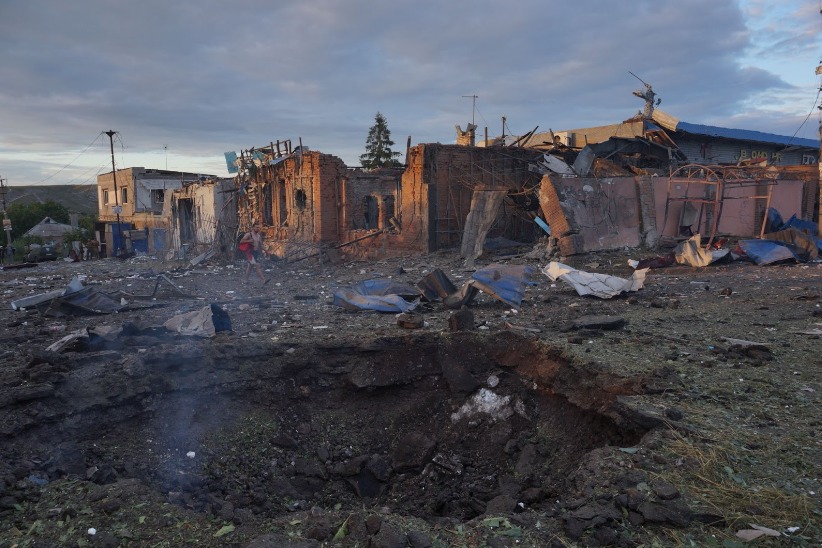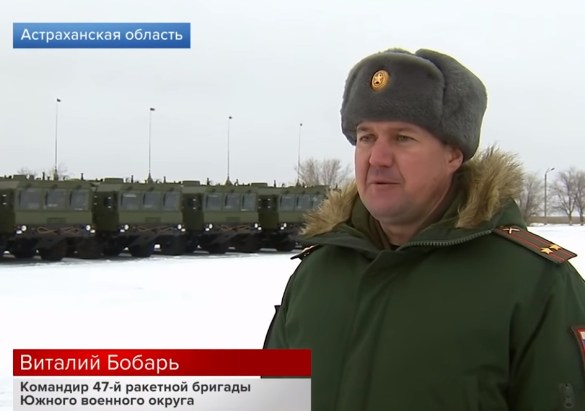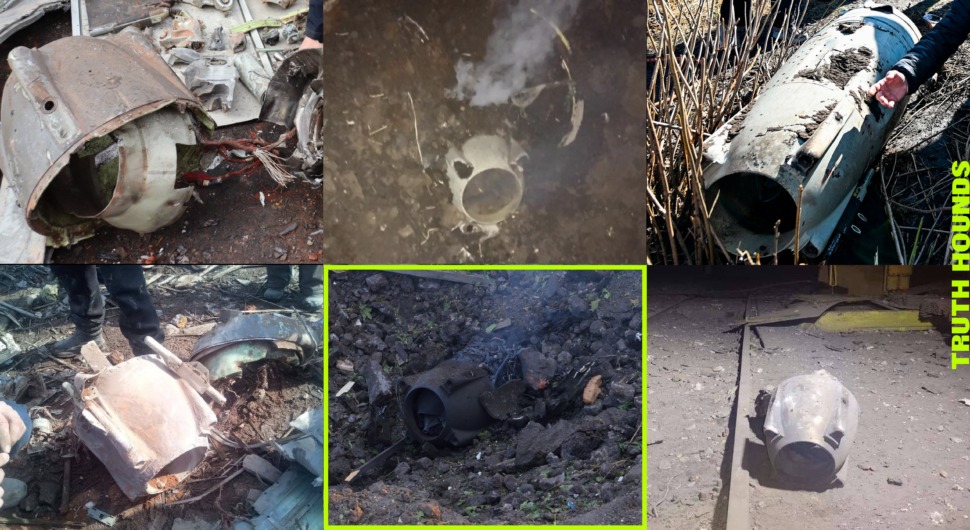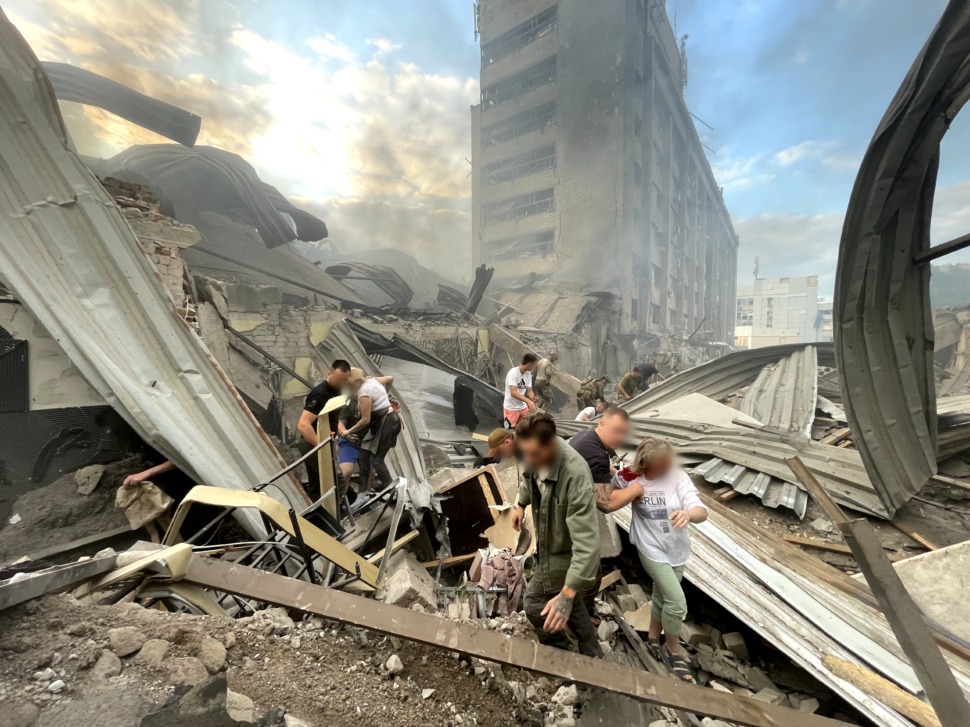A recently published investigation by the Ukrainian human rights organization Truth Hounds has concluded that Russian military forces were responsible for carrying out a deadly missile strike on a pizzeria in the city of Kramatorsk and nearby village of Bilenke in eastern Ukraine's Donetsk region on 27 June 2023. The attack, which utilized Iskander-K cruise missiles fired from Russia-occupied territory, killed 13 civilians, including a Truth Hounds researcher, Viktoria Amelina.
The findings of the investigation were based on extensive analysis of the damage caused by the twin strikes, examination of the blast craters and missile debris, eyewitness accounts, and other evidence.

Provided to Truth Hounds by Kramatorsk Post journalists
"The established facts indicate that the missiles were launched from a south-eastern direction relative to the settlements – a territory under the responsibility of Russia's Southern Military District," the 80-page investigation report states.

By cross-referencing the known Iskander missile units attached to Russia's various military formations with their locations and activities at the time of the attack, the investigators were able to narrow down the list of suspects to just one outfit – the 47th Missile Brigade of Russia's 8th Combined Arms Army commanded by Colonel Vitaliy Bobyr.
"Having verified the involvement of different Russian missile brigades in the armed conflict, we have come to the conclusion that the most likely perpetrator of the 27 June 2023 attack on Kramatorsk and Bilenke was the 47th Missile Brigade of the 8th Army of the Russian Armed Forces," the document concludes.
The report strongly disputes claims made by Russian propaganda outlets and government officials that the target of the strike was a gathering of foreign mercenaries and Ukrainian military officers at the Ria Lounge restaurant in central Kramatorsk. The investigators interviewed multiple eyewitnesses who were present at the scene before, during, and after the attack. None could corroborate the presence of any foreign nationals or senior Ukrainian commanders among the casualties.
"I did not see any generals there. Of course, I saw civilians as usual, but I also saw many soldiers – also a normal situation," said one witness cited in the report. "The majority of military looked like, as usual. For example, they could be dressed in uniform military pants and a T-shirt. On 27 June – when I was in Ria – the ratio of military to civilians was about 60 to 40 percent, respectively. This situation was on the summer patio. However, when I went inside to the toilet, I saw the same situation. I did not notice any meetings, gatherings, or a larger concentration of military," noted another.
While acknowledging that the unusually high proportion of Ukrainian servicemen among the patrons may have led Russia to consider the restaurant a legitimate military target, the Truth Hounds investigators nonetheless contend that the attack should be classified as an indiscriminate attack and war crime under international law. They point to the large blast radius of the cruise missile and the lack of control over the target as reasons.

"The fact that a cruise missile, a weapon with high destructive power, was used against an object located in a densely populated area of a large city, as well as the lack of control over the target, led us to conclude that the attacker knew about and did not wish to avoid the excessive harm that this attack could cause and did in fact cause," the report states.
According to the findings, the Iskander-K missiles took approximately 15 minutes to reach their targets after being launched from a distance of 150-200 km. This left the Russian forces with no way to adjust their aim or abort the strike if the expected military personnel were no longer present at the site. In the end, civilians made up the vast majority of the casualties from the attack.

"By combining the wide area effect of cruise missiles with the lack of control over the target by the perpetrators of the attack, we can state that the attacks on the Ria Lounge restaurant and Laguna cafe were indiscriminate in their essence," the human rights researchers conclude.
The report ends with a call for Russian political and military leaders to be held accountable for violations of international law committed during the full-scale invasion of Ukraine. It also contains a detailed analysis of how the strikes on Kramatorsk and Bilenke satisfy the legal criteria for war crimes under the Rome Statute of the International Criminal Court.
With over 100 pages of evidence, eyewitness accounts, and expert analysis, the investigation represents the most comprehensive and credible public examination of the 27 June attacks to date. It provides a blueprint for how Russia's frequent claims that its forces only target legitimate military sites can be countered through open-source intelligence techniques and impartial documentation of the facts on the ground.
Related:
- Award-winning Ukrainian writer who uncovered Russian atrocities dies in missile attack
- Ukrainian Truth Hounds human rights activists receive Sakharov Freedom Award for documenting war crimes
- Read a previous Truth Hounds investigation: Russian airstrike on Mykolaiv hotel, psychiatric hospital was a war crime, sleuths prove with drone footage
- Award-winning Ukrainian writer who uncovered Russian atrocities dies in missile attack

